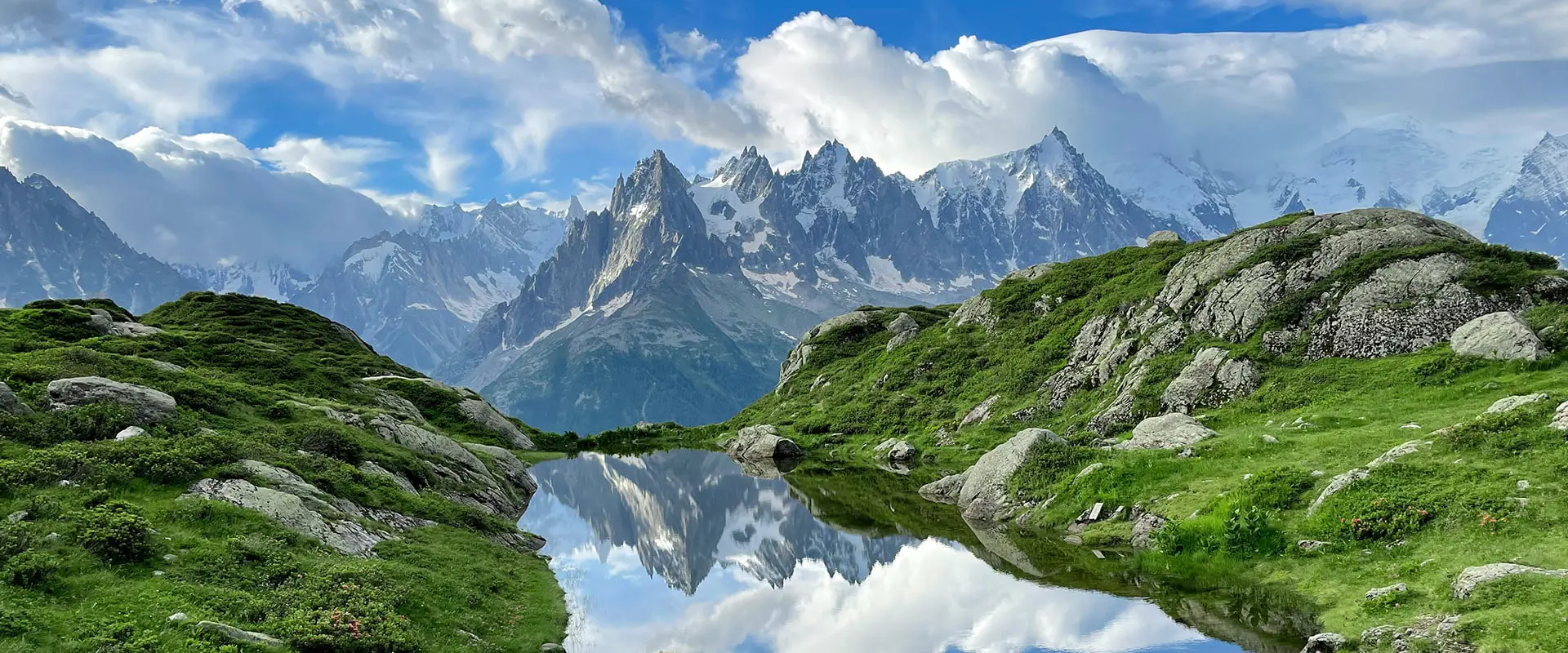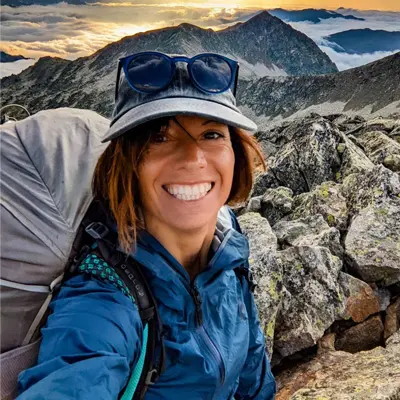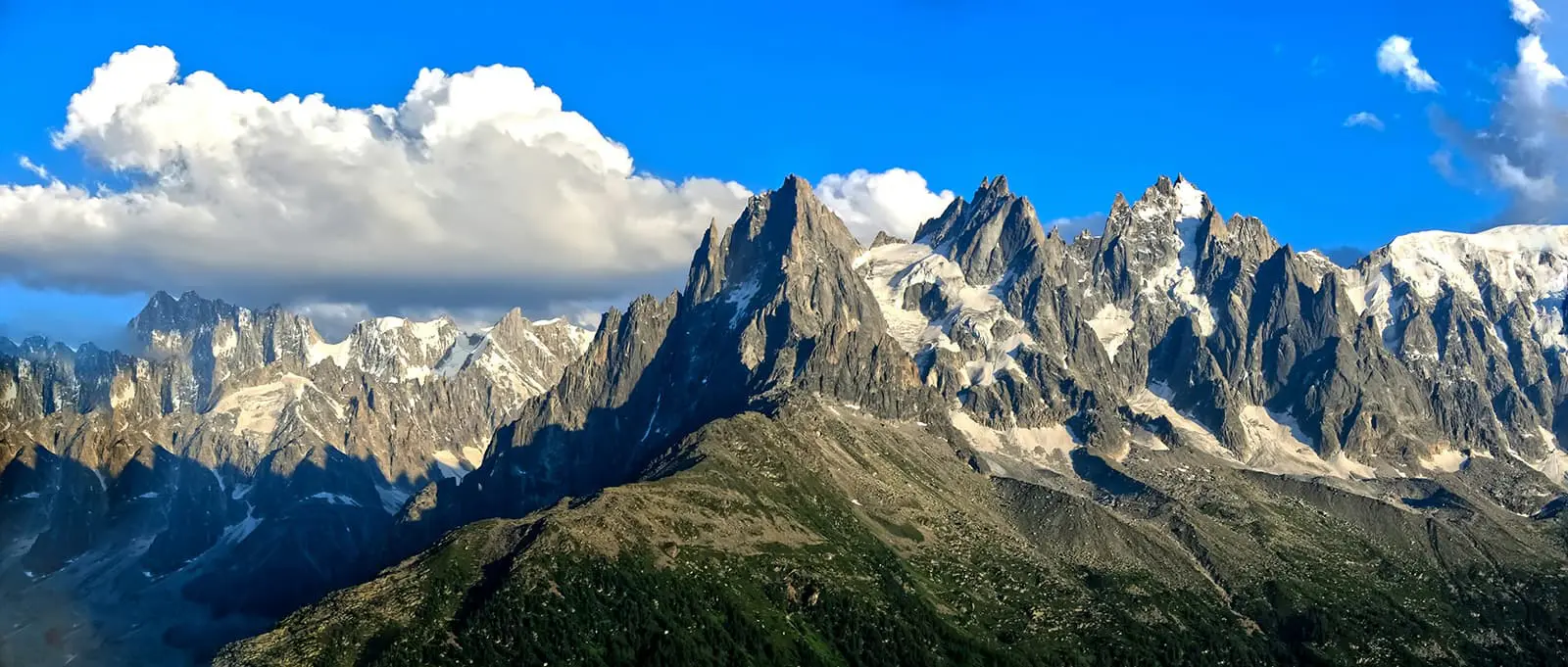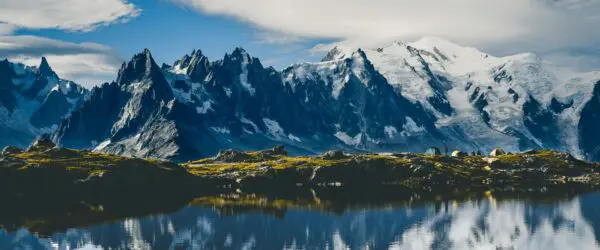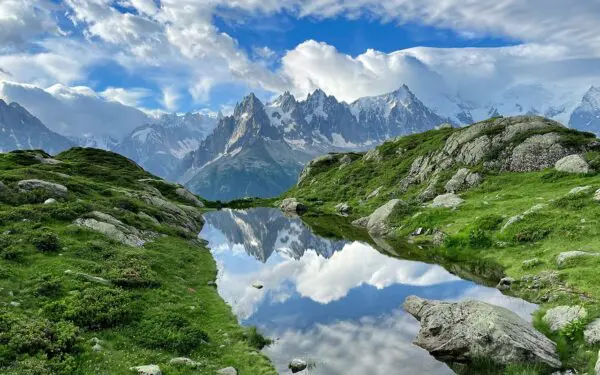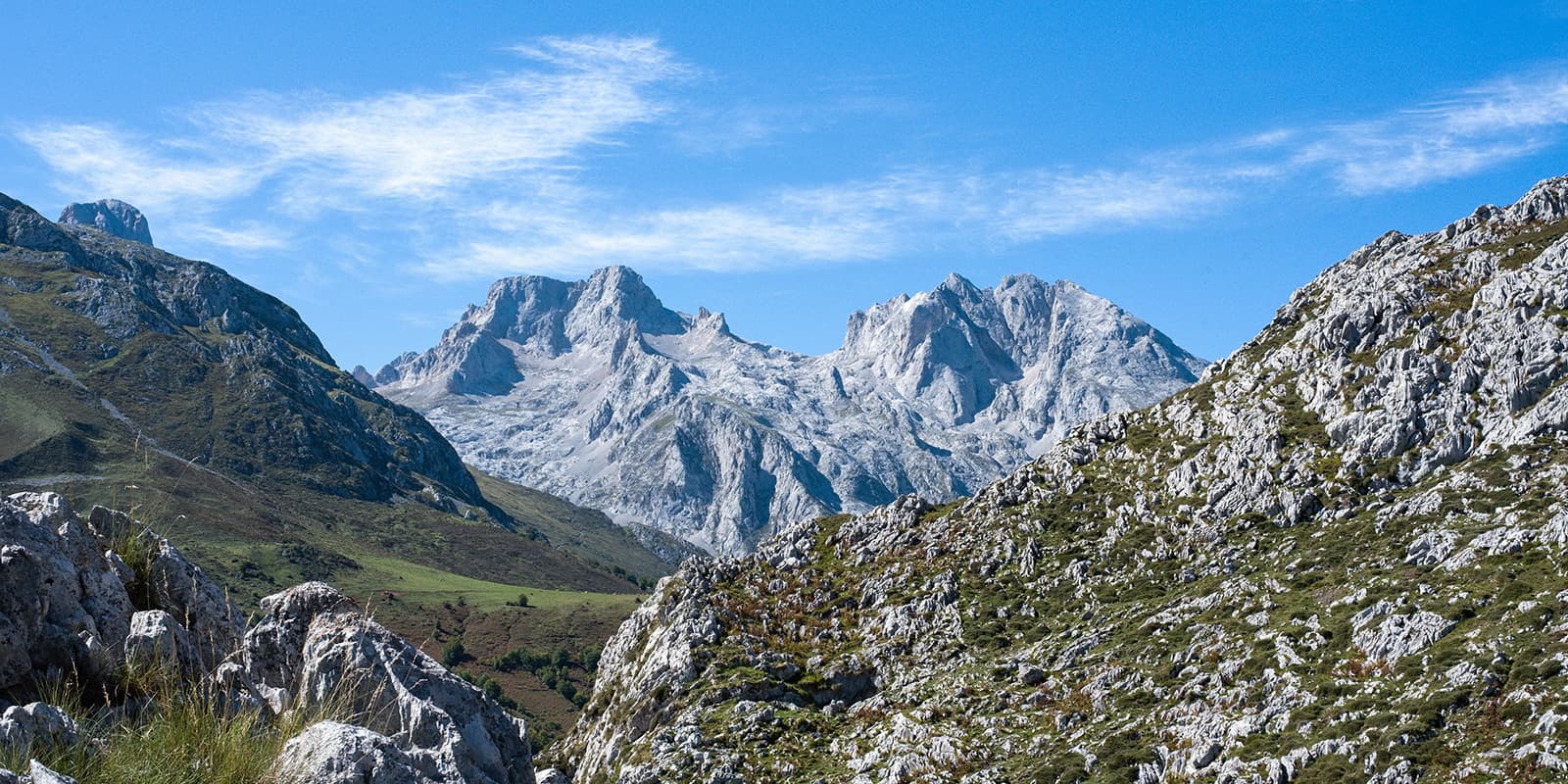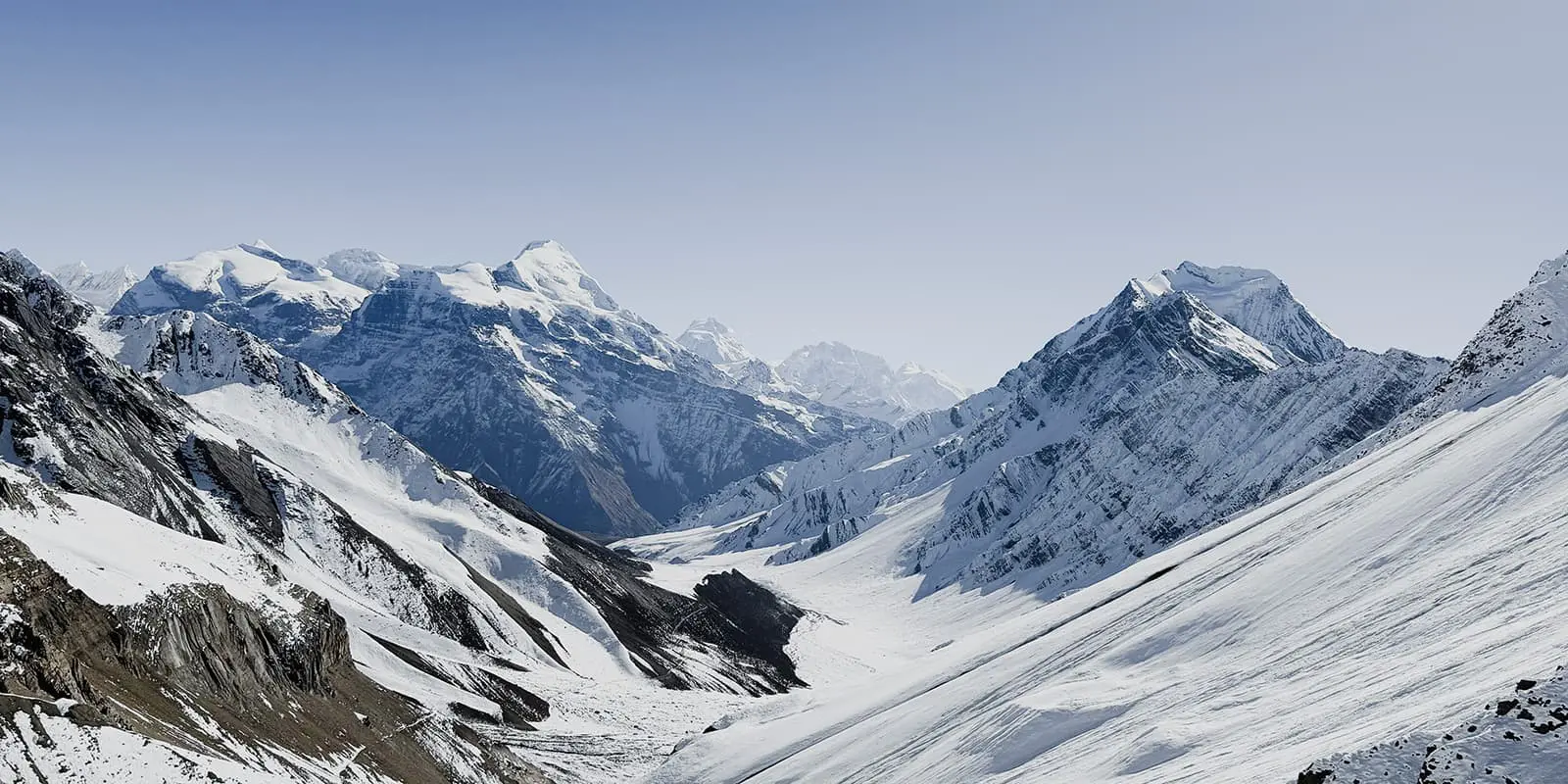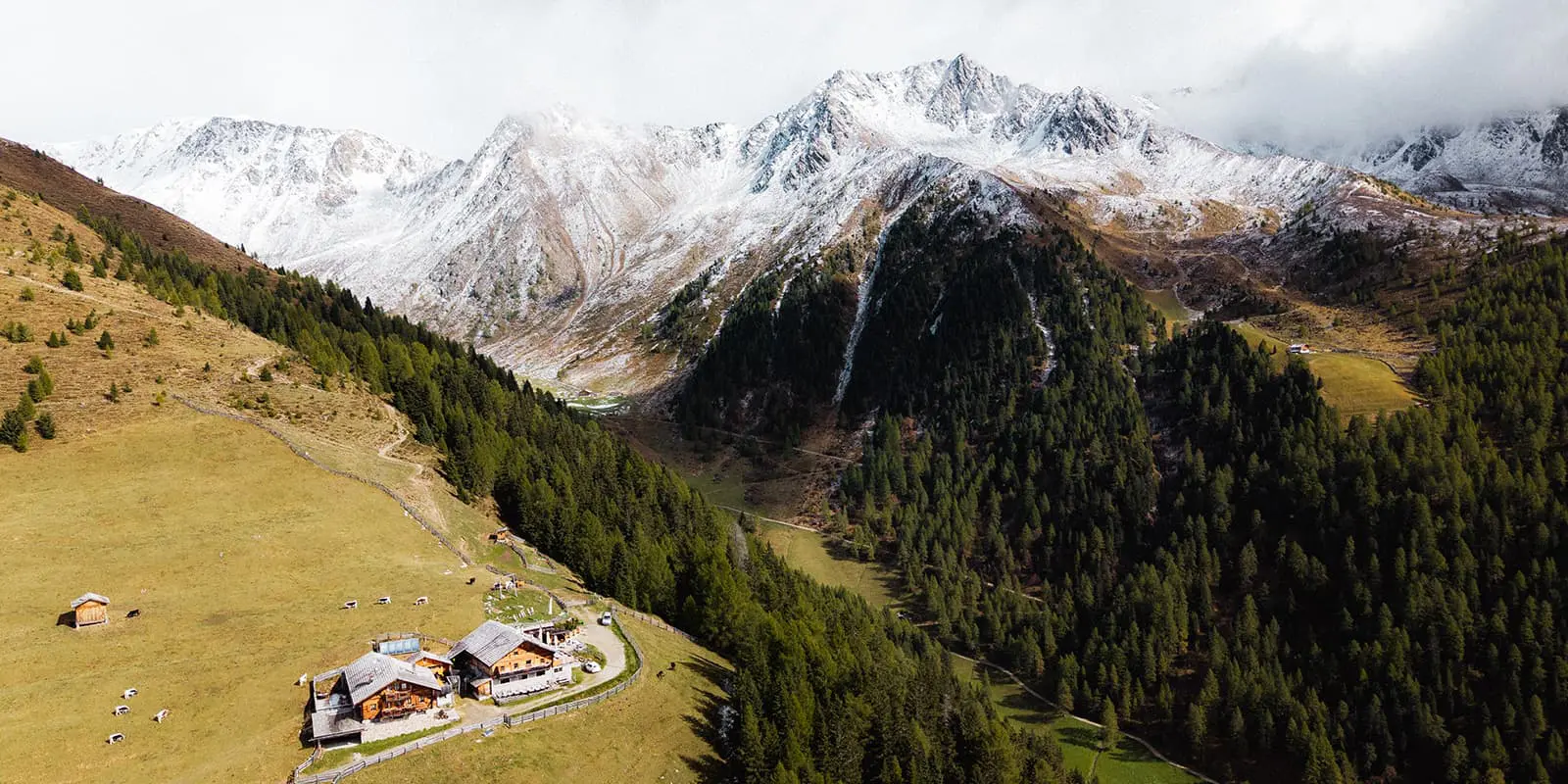Walking anti-clockwise from Les Houches, there are two possible routes to hike stage 1 to Les Contamines-Montjoie. One is shorter and is preferred in bad weather. The other option is more epic, crossing a suspension bridge, passing the Bionnassay glacier, and taking you up over the Col de Tricot (2120m).
Stage 2 is tough for anyone who is still finding their fitness on the trail, crossing two high passes – the Col du Bonhomme (2329m) and the Col de la Croix du Bonhomme (2483m). From the second col, hikers can choose whether they leave the crowds to walk the variant route. The variant takes you over another pass, the Col des Fours (2665m).
You’ll cross from France into Italy on the easier stage 3 at the Col de la Seigne (2516m), and continue through Italy on stage 4 to the scenic hikers’ town of Courmayeur – a good place to take a rest day if needed. Stage 5 takes you up through the forest where you can choose between the main route and the high variant on the Mont de la Saxe ridge, with spectacular views of the south face of the Mont Blanc range.
You’ll cross over the Grand Col Ferret (2537m) into Switzerland on stage 6. From here you’ll leave the dramatic glaciers behind, at least for now. The trail descends into the Swiss Val Ferret, where Switzerland lives up to its stereotypical reputation, with cows with bells around their necks, green meadows, wildflowers, and beautiful forests.
Stage 7 to Champex is the easiest stage of the TMB, passing pastures. Stage 8 gives you the option of taking the Swiss variant, the Fenêtre d’Arpette (2665m), the most spectacular – and toughest – section of the whole TMB. The Fenêtre is a steep scramble up then down and takes you so close to the Trient glacier that you can almost touch it.
Stage 9 takes you back into France, over the Col de Balme (2191m). There’s the option of yet another variant to the Col, perfect if you’re craving being away from people. Mont Blanc reappears, as does Chamonix, far down in the valley below.
You’ll hike back through the higher slopes of the Vallée de l’Arve on the final stages, 10 and 11, and into the Réserve Naturelle des Aiguilles Rouges. There are a series of metal ladders, adding some excitement to the final sections! Many hikers take the route to Lac Blanc, a stunning, clear lake, popular with day hikers, with some of the best views of the trail. Finally, you’ll find yourself back in Les Houches, where you began.



